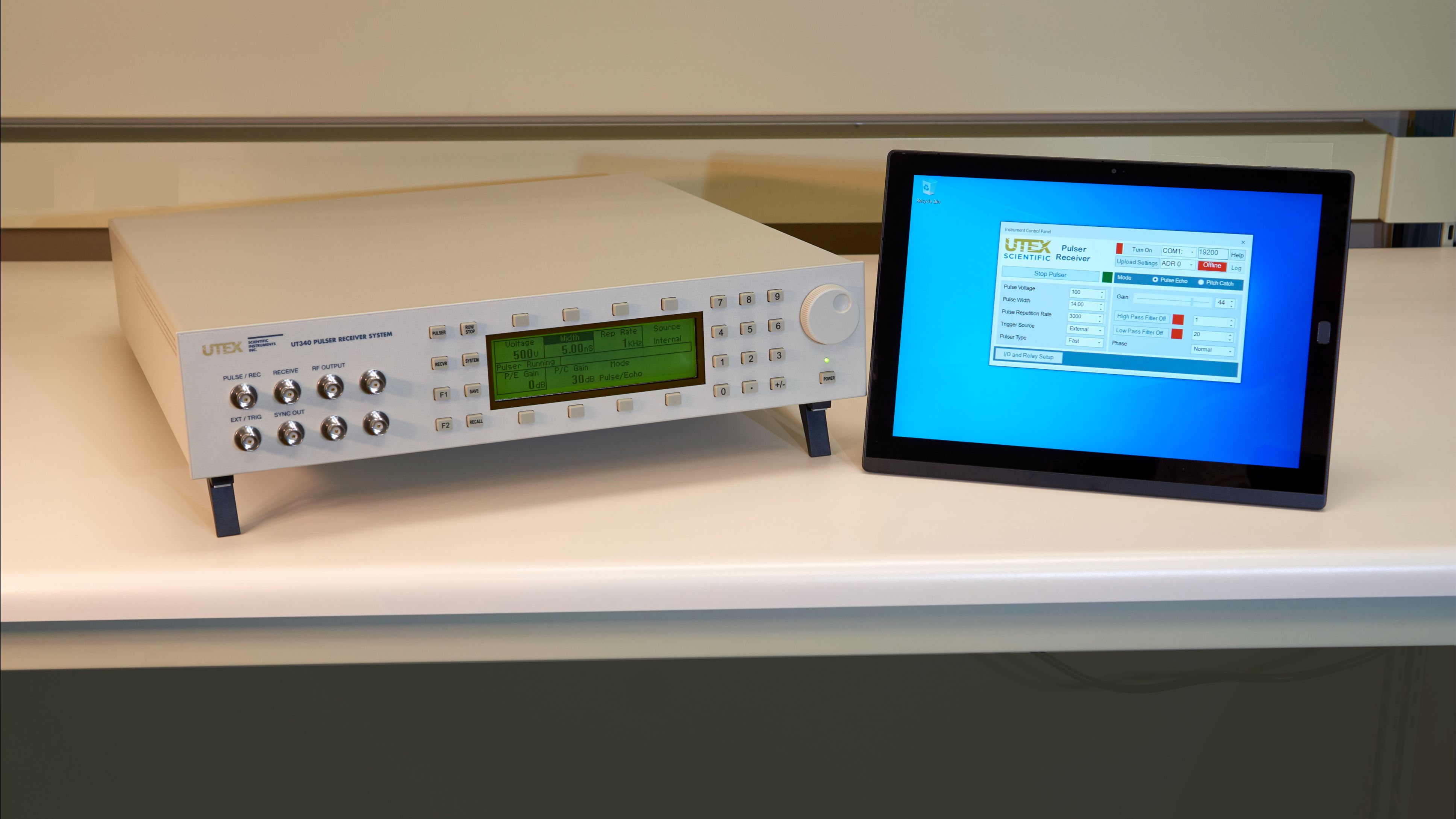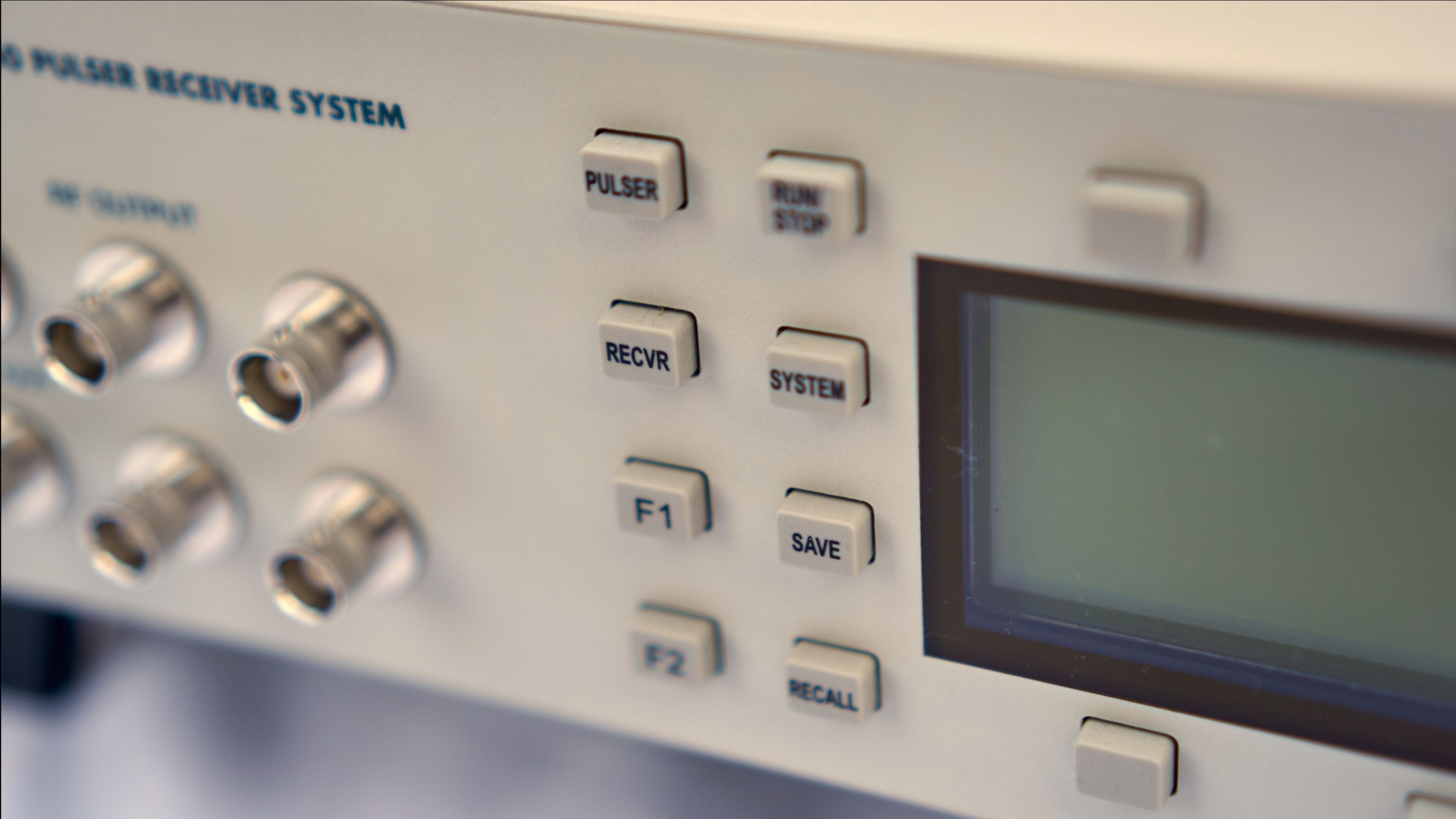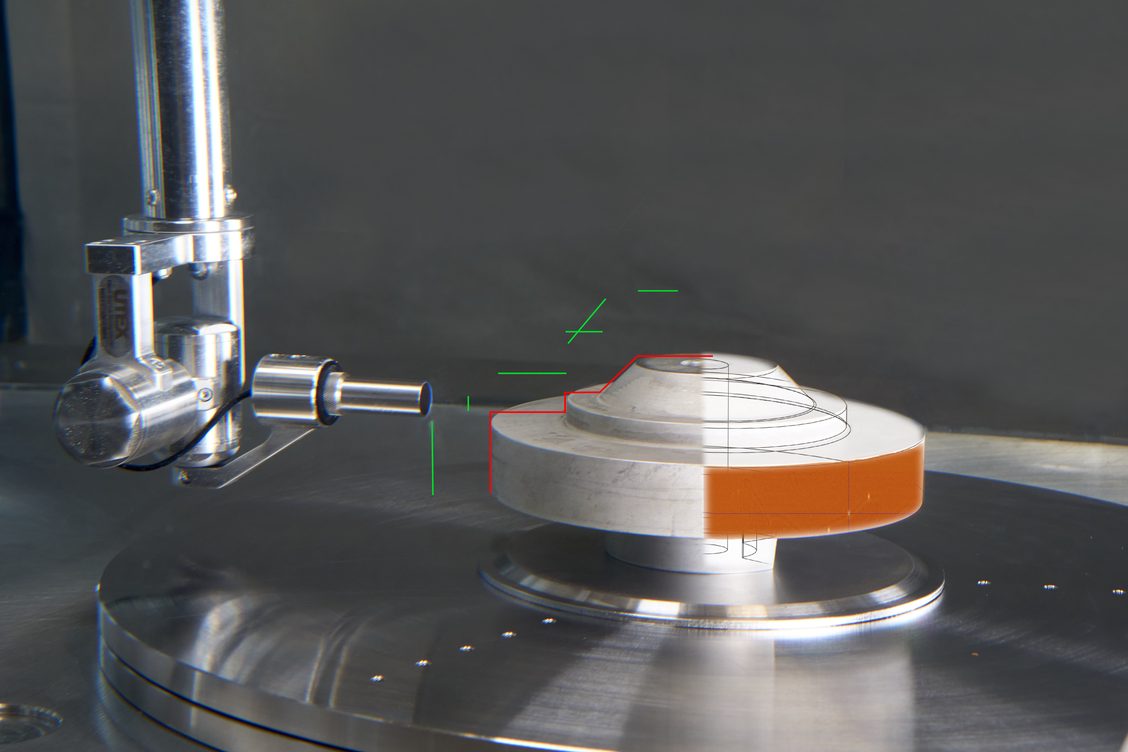It’s Still Hip to be Square

The History of the Iconic UT340 Pulser Receiver
Walter Weber
Here's the back story for those of you interested in the history of UTEX and our popular pulser receiver that was released in 1994. Technical business founders usually don't like to communicate all that much. This topic required someone who was there, so here I am to tell the story.
An offer of help that accidentally started a company
In 1989, an engineer at Ontario Hydro Research approached me about problems they were experiencing while performing high frequency inspections with long cables. They were inspecting CANDU nuclear fuel channels from outside of the containment building. Existing Panametrics pulser receivers were not able to provide enough excitation energy, and therefore suffered from a poor signal to noise ratio.
We foolishly proposed that a high frequency squarewave pulser could be prototyped in 30 days. Despite our suffering a serious lack of sleep, the resulting prototype could generate an adjustable 1000V square wave pulse with a 4 nanosecond risetime. It turned out to be overkill as it blew the face off of the lead metaniobate transducers used in the CANDU inspections. We very quickly learned about something called transducer flashover.
With the smoke still clearing, we decided on the spot that 500V might be a more appropriate voltage for high frequency work. When used at lower voltages, our prototype demonstrated that a fast risetime squarewave pulser could indeed drive long cables with excellent high frequency inspection resolution. Based on this success,Ontario Hydro asked us to develop a next-generation multichannel UT instrument.
The next five years were spent performing the R&D that would see the creation of UTEX in 1992 and the release of the UT340 two years later.
The technology
Before the UT340 came along, gain was usually controlled by an attenuator followed by a fixed gain amplifier. It's not very kind to small signals to first attenuate them only to amplify them again. To improve things, we perfected switchable gain blocks that sum together to provide excellent low-noise performance and extremely wide dynamic range at high frequencies. The only downside is that gain is controlled in 1dB steps, not finer.
On the pulser side, other manufacturers were limited to using avalanche transistors in order to get sufficiently fast risetimes for high frequency work. We figured out how to drive even the largest field effect transistors at ever increasing speeds. We called this technique risetime amplification. The result is a 500V, 10A peak pulse that is as fast as a logic signal. Stubborn loads such as capacitive cables and transducers are no match for such a powerful high-resolution wallop.
We are just touching the surface here with the basics. Let us know, if you would like to see a future piece on other benefits such as how we achieve: wide dynamic range, PRF rates higher than 20kHz, precise pulse tuning, elimination of cable reflections, etc.
The offer of stability
The high cost of recertifying a nuclear inspection leads to an industry which prefers an instrument that remains available for a long time.This is the primary reason that we aimed as high as we could and have not needed to change the design. Thirty years ago, UTEX created a standard with performance that no other manufacturer has been able to duplicate. After all this time, the UT340 remains fully modern, computer-controlled and ready for many more demanding applications.

Some notable features of the system:
Beyond nuclear
Right away, the UT340 started showing up in university physics and mechanical engineering departments for measuring material properties such as Young’s modulus and Green’s function. It was then dragged kicking and screaming into every other industrial NDT application where significant resolution or power are required. Subsequently, the UT340 has improved signal quality in all NDT market sectors from nuclear weapons inspection to space launch inspection systems.
It was just a matter of time before the stability and repeatability of the UT340 made it the obvious choice for transducer characterization. Most leading transducer manufacturers characterize their production using our instrument and software. In production, you want to be able to detect very small changes in transducer performance over time. This requires that you generate the exact same pulse every time and receive the signals with a spectrally pure bandwidth and precise gain. For this community, the UT340 has become a reference pulser receiver.
The bottom line
The UT340 ended up becoming the world’s only 1 to 150MHz square wave pulser receiver system. A square wave pulser generates more than twice the acoustic output when compared to a spike pulser. This improves the relative signal to noise ratio (SNR) by approximately 6 to 15 dB.
The practical benefits are better detection of small reflectors in very challenging materials, while simultaneously increasing material penetration. This benefit is achieved by combining the increased acoustic output mentioned above with the very low noise amplifiers of the UT340.
I’ve enjoyed going back in time to inform you how we got our start. UTEX exists because the nuclear power industry had a problem that needed to be solved. In 2023, we still make problem solving our primary focus by remaining a technology development company. We still hire scientists and engineers whose great work makes them our best and only sales force.
Browse our site for more information about this and other nondestructive testing and evaluation innovations.
 ICMY
ICMY
Did you miss our NDE 3.5 series?
Catch up here:

|